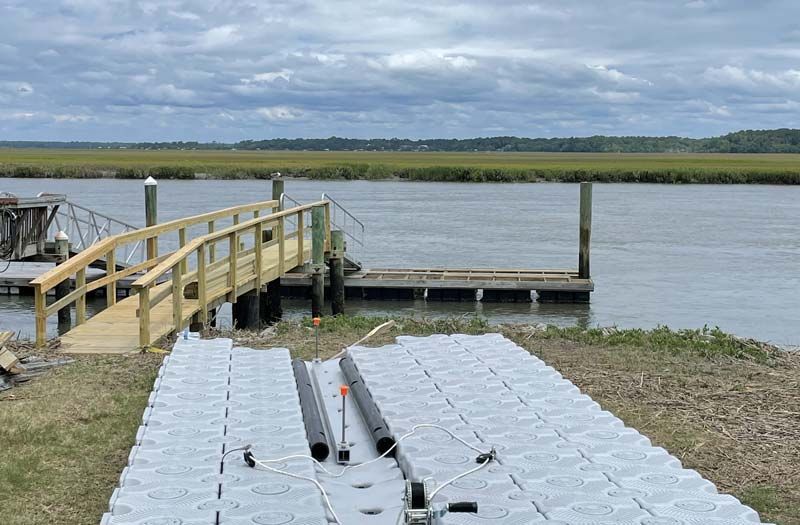Dock Structural Assessment: Expert Tips for Safety

Expert Tips on Dock Structural Assessment for Longevity and Safety
Conducting a dock structural assessment is essential to ensure the safety, durability, and longevity of your marine construction. This process helps identify any weaknesses or damage that could potentially lead to costly repairs or hazardous conditions. A thorough dock structural assessment involves inspecting various components such as pilings, decking, and fasteners to ensure they are in good condition and meet safety standards.
Key Takeaway
- Dock structural assessment ensures safety and longevity.
- Inspection focuses on pilings, decking, fasteners, and other critical components.
- Regular assessments can prevent costly repairs and extend the dock's lifespan.
- Professional assessments provide detailed insights and recommendations.
- Environmental factors and wear-and-tear are significant considerations.
Why Dock Structural Assessment is Important
A dock structural assessment is not just a routine check-up; it is a vital procedure to ensure the integrity and safety of your dock. Regular assessments can identify issues before they become severe, saving you money in the long run.
Components of a Dock Structural Assessment
Pilings
Pilings are the foundation of any dock. They bear the weight of the entire structure and must be inspected for signs of deterioration, such as rot, cracks, or marine borer damage.
Decking
Decking materials can suffer from wear-and-tear due to environmental exposure. Inspect for splinters, warping, and rot. Ensure that all boards are securely fastened and not loose.
Fasteners
Fasteners, including bolts, nails, and screws, are crucial for the dock's stability. Check for any corrosion or loosening that could compromise the dock’s structural integrity.
Accessories and Extras
Any additional features like handrails, ladders, or cleats should also be inspected as part of the structural assessment. These elements contribute to the overall safety and functionality of the dock.
How to Perform a Dock Structural Assessment
Visual Inspection
Start with a visual inspection to identify any obvious signs of damage. Look for cracks, splits, or warping in the wood and corrosion in metal parts.
Manual Testing
Apply pressure to various parts of the dock to check for any instability or weakness. This is especially important for pilings and decking.
Environmental Factors Affecting Dock Structures
Water Levels
Fluctuating water levels can cause stress and damage to the dock structure. Assess the stability of the dock during different tide levels.
Weather Conditions
Weather conditions such as storms, heavy rain, and high winds can significantly impact the dock's structural integrity. Regular assessments should be performed, especially after severe weather events.
Marine Life
Marine life like barnacles and marine borers can degrade the materials used in dock construction. Inspect for any signs of infestation or damage caused by marine organisms.
Professional Dock Structural Assessments
Tools and Technology
Professionals use advanced tools like ultrasonic testers and moisture meters to detect issues that are not visible to the naked eye. These tools provide a more comprehensive assessment of the dock’s condition.
Tool Purpose Benefits
- Ultrasonic Tester Detects internal damage Accurate and non-invasive
- Moisture Meter Measures moisture levels in wood Prevents rot and decay
- Infrared Camera Identifies heat loss and structural issues Detailed analysis
Expert Recommendations
After the assessment, professionals provide detailed reports and recommendations for repairs or maintenance, ensuring your dock remains in optimal condition.
Regular Maintenance: The Key to Longevity
Regular maintenance is crucial to prolong the life of your dock. Below are some maintenance tips:
- Clean the dock regularly to remove debris and algae buildup.
- Apply sealant to protect wooden components from moisture.
- Check and replace damaged fasteners to maintain structural integrity.
- Inspect the dock after storms for any signs of damage.
Common Issues Found During Dock Structural Assessments
Rot and Decay
Wooden docks are particularly susceptible to rot and decay due to prolonged exposure to moisture. Look for soft spots and discoloration.
Corrosion
Metal components can corrode over time, leading to weakened structural elements. Regularly inspect and replace corroded parts.
Loose or Missing Fasteners
Loose or missing fasteners can compromise the stability of the dock. Ensure that all fasteners are secure and replace any that are missing.
Table: Common Dock Issues and Solutions
Issue Symptoms Solution
- Rot and Decay Soft spots, discoloration Replace affected wood, apply sealant
- Corrosion Rust, weakened metal Replace corroded parts, use rust-proof materials
- Loose Fasteners Wobbling, instability Tighten or replace fasteners
DIY vs. Professional Assessment
DIY Assessment
A DIY assessment can help identify obvious issues, but it might not catch more subtle problems. Use basic tools like a hammer and flashlight for a preliminary check.
Professional Assessment
A professional assessment is more thorough and uses specialized tools to detect hidden issues. Professionals can provide a detailed report and actionable recommendations.
Cost of Dock Structural Assessment
DIY Costs
DIY assessments are relatively inexpensive, requiring only basic tools and materials.
Professional Costs
Professional assessments can be more costly but offer more detailed insights. The cost can vary based on the dock’s size and location.
Benefits of Regular Dock Structural Assessments
- Prevents accidents by ensuring the dock is safe to use.
- Extends the lifespan of the dock by identifying issues early.
- Saves money on costly repairs by addressing problems before they escalate.
- Increases property value by maintaining a well-kept dock.
Key Tips for Ensuring Dock Safety
- Conduct regular visual inspections.
- Schedule professional assessments periodically.
- Perform maintenance tasks like cleaning and sealing.
- Inspect after severe weather events.
Conclusion
A thorough dock structural assessment is essential for ensuring safety and longevity. Regular inspections, maintenance, and professional assessments can help identify and address issues early, saving you time and money. Prioritizing the structural integrity of your dock will ensure it remains safe and functional for years to come.


